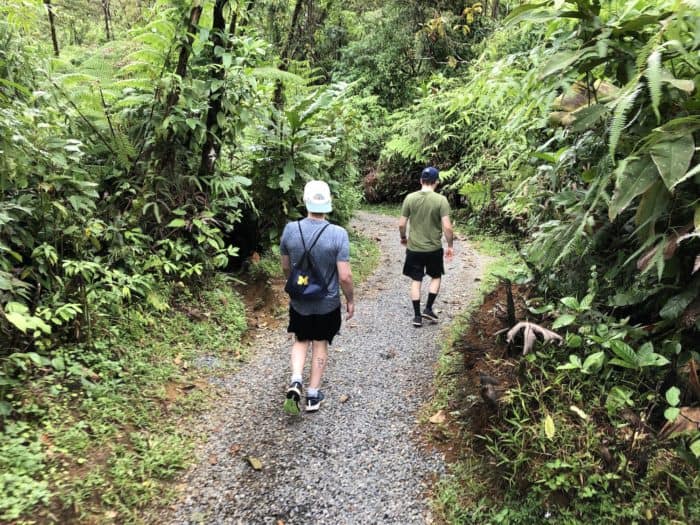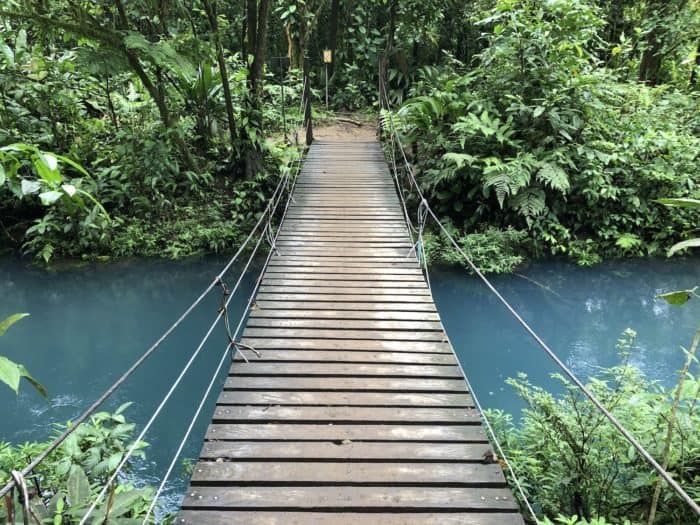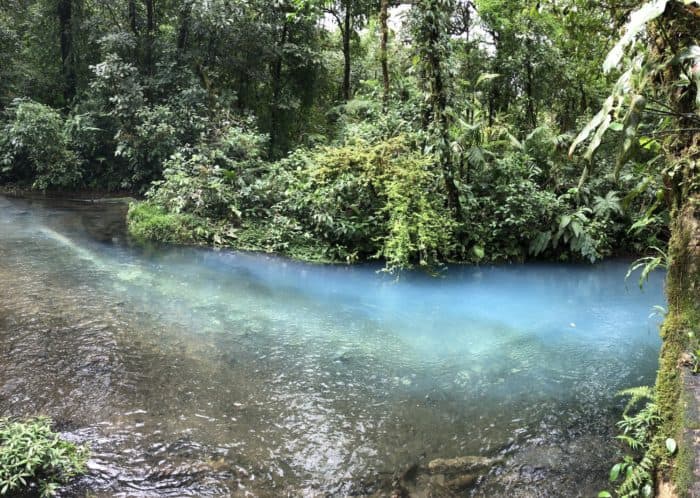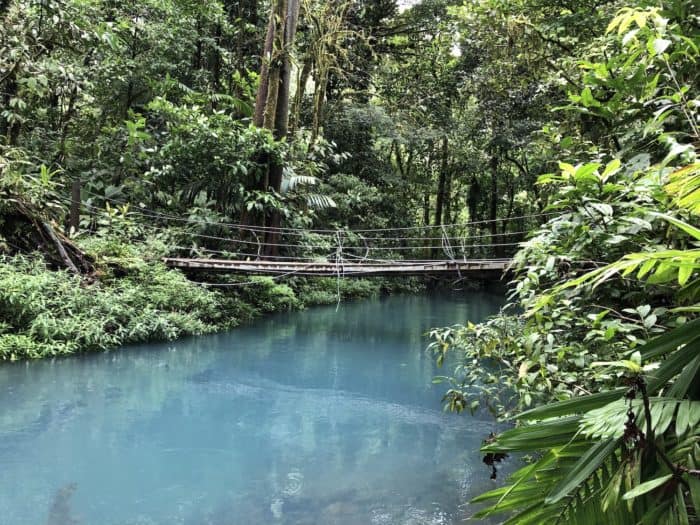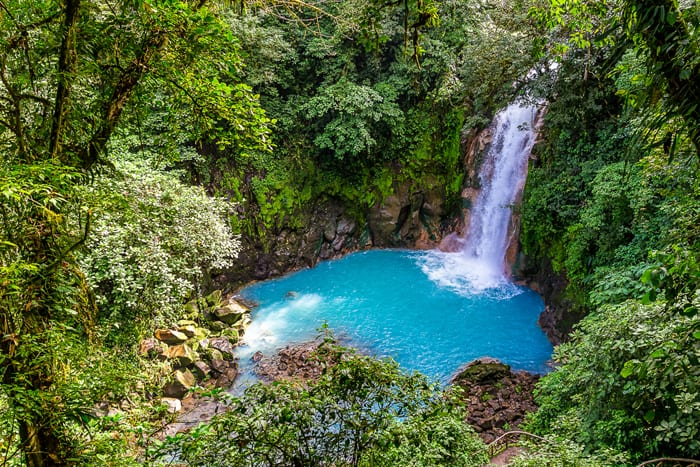Tenorio Volcano National Park is beautiful, but you have to be willing to work for it.Located about 20 minutes from Bijagua, Alajuela, Tenorio Volcano National Park is best known for Rio Celeste — the river and waterfall that seem to have been painted blue by a brush.
Hike farther through the rainforest and you’ll reach a lookout point, cross the colorful river twice on narrow bridges, and reach the spot where clear water turns sky blue.
Getting to Tenorio Volcano National Park
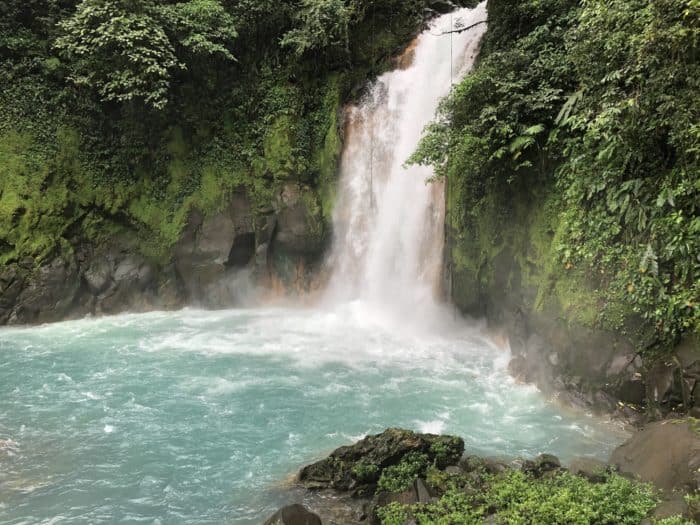
This part is easier than it used to be. The road from Bijagua to Tenorio Volcano National Park is paved, so you don’t need a 4×4 to reach the entrance. Be prepared for a narrow, winding road through the rainforest and beautiful scenery while you drive.
Tenorio Volcano National Park is about 20 minutes from the town of Bijagua, Alajuela; about 90 minutes from Daniel Oduber Quirós International Airport in Liberia, Guanacaste; and about 3.5 hours from San José.
Click here for a pin of the trail entrance location in Google Maps.
Parking is 2,000 colones (about $3.50) per car at any of the lots near the entrance. The Tenorio Volcano National Park entrance fee for adults is $12, or 800 colones for Costa Rican nationals and residents. Cash and card are accepted.
There are restrooms and typical restaurants at the entrance.
The park is open daily (including Mondays) from 8 a.m. to 4 p.m., though you can’t enter the park after 2 p.m. My recommendation: Arrive early, especially from mid-December to April, as the park will get crowded.
Hiking in Tenorio Volcano National Park
Tenorio Volcano National Park has one out-and-back trail that passes the following attractions, in order:
- Rio Celeste Waterfall: A 30-meter waterfall that thunders into a bright-blue pool of water. A turn-off from the main trail will send you down a long staircase to the lookout point.
- La Laguna Azul: A small lagoon of intense blue color. This is visible from the main trail, and a left turn will bring you closer.
- Los Borbollones: A spot in the river where hot volcanic gases bubble through the water.
- El Teñidero: The spot where two rivers meet to form Rio Celeste — turning the water from clear to blue. This also marks the end of the trail.
The entire hike is about 5.5 km (about 3.5 miles), including the long set of stairs from the main trail down to the waterfall lookout point (and all the way up). Take your time, and if you get tired on the stairs, there’s no shame in stopping to appreciate the waterfall for a few more minutes — and to catch your breath.
The section from the beginning of the trail to the waterfall is mostly paved and in good condition, though there are some steep sections and it is mostly uphill. Beyond the turn-off for the waterfall, the trail is mostly unpaved — but it is well-trafficked, and as of December 2019, the park is working on improving that trail.
Swimming is not allowed within the national park.
Rain can diminish the blue coloring of the water, and it can also make the trail quite muddy. The park sometimes closes if the trails become unsafe; their Facebook page does a good job of sharing relevant trail and weather information.
Wear clothes (and shoes) that you don’t mind getting dirty, and in a pinch, you can rent rubber boots at a stand outside the trail entrance.
Why is the Rio Celeste water blue?
According to the park, which cites studies from the University of Costa Rica and the National University, when the two streams meet at El Teñidero, it causes a pH change which in turn changes the size of a mineral present in the water.
The mineral remains suspended in the water and as of the perfect size to scatter the bright blue color in an optical phenomenon known as Mie scattering.
Or, you know, magic.
Photos: Rio Celeste and Tenorio Volcano National Park
